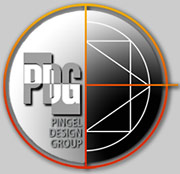Design Services
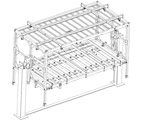
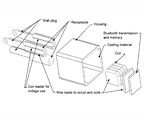
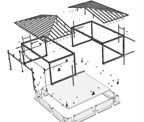
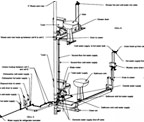
PDG specializes in the following areas of design:
Retail and industrial product design, industrial recycling equipment, earth stewardship process, product prototyping, manufacturing equipment, packaging, point of purchase design, marketing plans, graphics, social media, project planning, business plans and finance. Following are two descriptions of the product design process. The first is big picture view, the second group is a detailed view of the design process. All projects are given a custom mix of service(s) to fulfill the clients need.
Big picture view, dealing with product and project development
Pingel Design Group Inc
Overview for Product and Project Design Process
Phase 1-2-3
Pingel Design Group Inc. copyright 1995-2012 All rights reserved
Phase 1
- Research Information
- Review found Information
- Develop Concept from Information
- Concept Refinement
- Major Concept
- Major Concept Points
Phase 2
- Product Design Development
- Product Design Refinement
- Finished Product Design
- Execution Plan
- Task List
- Art of Discovery
- Product Design Refinement
- Measurement Method
- Accountability
- Modification through Feed Back
- Review for Finances
Phase 3
- Finance Plan
- Execution Plan
- Art of Discovery
- Refinement
Detailed view, dealing with product and project development
Detailed Outline for Design Process
Pingel Design Group Inc. copyright 1995-2012 All All Rights Reserved
Sign off must take place on each step to assure the highest design and service quality.
Phase 1
- Initial Meeting
- Review needs
- Assess which person or persons can help affect a problem solve
- Discuss timetable
- Timetable is written and e-mailed
Non-Disclosures Signed
- Protection of other parties
Gather Existing Information
- Written
- Articles
- Verbal
- Sites
- Video
- Photographs, illustrations, other graphic elements
Document Clients Project Concept
- Written description of concept
- Clients dream list
- Major points list
Review Clients Project Concept
- Review concept for workability
- Day-to-day operation problems
- Difficulty of execution
- Financial feasibility
Contracts
- For starting process
- Fee rates
- Down payment
- Set-up timetable
Rough Concept Discussion
- Major points
- Critical success factors
Rough Cost Review
(Please note: until all audits are complete, no fixed or assured pricing can be given)
- Basic cost for components
- Basic cost for services
- Basic cost for software
- Basic hardware costs
- Integration costs
- Operation cost
- Maintenance cost
Market/Design Audit
Pingel Design Group Inc. Copyright ©1995-2013 All rights Reserved
All design rights and patent rights are property of Pingel Design Group Inc. The review of these documents does not constitute a public display and is considered secret, not for public review. No copies or distribution of this document is allowed. There is not implied use of the desing to anyone other than its owner Pingel Design Group Inc. The information contained on this page is privileged and confidential and thus is protected from disclosure. This information is NOT intended for transmission to, or receipt by, anyone other than a person authorized to review this document. You are hereby notified that any dissemination, distribution or copying of this communication is strictly prohibited.
©Copyright 2013
Projects Objectives
Phase 1:
- Problem Review
- Understand user-buying process
Phase 2:
- Concept Development
- Conceptually explore opportunities to better match user-buying process by enhancing association retail environment
Phase 3:
- Implementation Testing and Refinement
- Recommend program for developing, installing, testing and rolling-out the enhanced user retail environment
Constraints
- Market technology integration
- Information supported by technology
- Information which turns in product
Consumer Analysis covering:
- Core group
- Opportunity group
- Consideration set
- Buying trigger
- Group product services & pricing trigger
- Resources
Summary of Key Findings
- Review of methodology covering:
- Develop consumer-buying model
- Identify distinct groups
- Identify opportunity groups
- Understanding how key groups utilize resources
- Indications for user environment
- Methodology overview
- Understand how opportunity group utilizes resources at various stages
Consumer/User Focus Group
- Confirm elements of buying model
- Tentatively identified discriminating variables
- Review site on Internet
- Interview association staffs
- Document services practices
- Review sales practices
- Types of materials utilized in sales process
- Related association base case
Nature of Findings
- Compellation report
Influences
- Individual
- Situational
- Social
- Passive information gathering
- Active information gathering
- Product evaluation
- Price evaluation
- Purchase delivery
- Post purchase evaluation
Behavioral Groups
Review:
- Simplified Shopper
- Reluctant Shopper
- Impulse Shopper
- Constant Shopper
- Methodical Shopper
- Casual Shopper
Fundamental Demographic
- Age groups
- Average ages
- Income averages
- Education
- Gender
- Review industry trends and define target audience
Opportunity Group
- Core group
- Competitors core
Comparison Between
- Core group
- Opportunity group
Summary of Research Findings
- Report
Resources Utilized
- Information methods use
Audit Objectives
- User initiatives
- Competitors initiatives
- Related retail practices
- Opportunities for enhancing buying process
Audit Conclusions
- Report
User/Customer Satisfaction
- Setting, meeting clear expectations
- Familiarity/predictability
- Consistency
- Comfort
- Convenience
- Integrity
- Reliability
- Responsiveness
Hierarchy of Informational Needs
- Building consideration set
- Consideration set narrowing
- Option and comparisons
- Price comparison awareness
Resource Checklist
- Site buying process center
- Service center
- Continual access zone
- Information systems
- Buying process center
Conclusions and Recommendations
- Conclusions overview
- Recommendations
Buyers/Users Process
- Information centers
- Major ideas
Developer Model
- Concept
- Systematic process that starts with a shopper and ends with a buying customer
- Recommendations
- Critical success factors
- Retail user information systems
- Product price point
- Product and services systems
- Develop look and feel of image
- Review current industry media
- Prioritize users
Concept Development
- Integration of market information and client concept
- Detailed process review
- Incremental forecasting
Technical Audit
Pingel Design Group Inc. copyright 1995-2012 All rights Reserved
Auditing Components:
- Assumption: Each component will represent a module of the audit and would carry its own cost component.The customer can select components and we can recommend what we see as the needs, based on our interaction with them.
Information Systems Audit:
- The following components will comprise the overall information systems audit:
Audit of Total information Systems Requirements:
- (This process starts with “discovery” components.)
Part A: Evaluation of Overall Information Management Requirements:
- What types of information must be maintained, and for what purpose is it used?
- Is the system centralized, or is information maintained is separate modules?
- What is the degree of repetition and duplication of information managed within the system?
- How accurate is the information perceived to be by key users, and how accurate is the actual information? What is the perception gap?
- How accessible is the general deployment of the information perceived to be from the user perspective?
Part B: Evaluation of Current Information Management Tools and Deployment:
- What software is deployed in the current information management system?
- What is the configuration of the hardware system?
- How do these systems function in terms of input, output, and functionality of use?
- How functional and intuitive is the user interface?
Part C: Audit of Accounting Functions:
- What software is deployed in the current accounting management system?
- What is the hardware and software deployment?
- How well do the systems function in terms of input, output, and ease of use?
- How functional and intuitive is the user interface?
Part D: Audit of System-Wide Software Components:
- Applications in use system-wide, constancy across the computing system.
- Suitability and ease of use within the computing environment.
- Performance of applications in relationship to users’ computing needs, training programming, and skill sets.
Part E: Audit of Hardware Needs:
Audit of Computing Resources:
- Assessment of overall hardware platform deployment.
- Audit of servers, workstations, and printers: inventory, value, and age of equipment, assessment of current components’ ability to support requirements.
Audit of Mobile Applications Components:
- Evaluation of hubs, routers, bridges and firewalls for performance and suitability realized to system-related needs.
- Evaluation: of networking wiring, data transfer rates, and overall performance of mobile computing systems. (Cloud)
Audit of Internet Functions:
- Evaluation of Internet connectivity and data stream rates.
- Evaluation of hardware and software components for Internet functionality.
Part F: Database Management Audit:
- Hardware platform deployed.
- Applications, user-interface design, and information management modules deployed.
Audit of Database Functionality:
- Reliability, ease of use, training time line. maintenance, consulting expenses, and down time.
Part G: Web/mobile Site Audit:
- Audit of server deployment: hardware and software components.
- Audit of Web site functionality: serving speed, interactive capability, reporting functions, ISP services.
- Evaluation of current and future development requirements for static, dynamic, and interactive Web serving requirements.
System Engineering Review and Design
- Step-by-step review of the operation and its procedure
- Documentation
- Mapping of operation
- Staffing requirements
- Site architecture
Software Specifications
- Review of off-shelf software to meet the needs of the client
- Specifications for component software parts
Hardware Specifications
- Review of off-shelf hardware components to meet the needs of the client
- Specifications for hardware components
Pricing for Finished Design
- Description of services
- Detailed proposal with related cost
- Timeline for execution
Contract for Execution of Finished Design
- Compiled cost
- Description of services
- Down payment
Web Site General Design
- Integration of new information and technical development with web design process
- Staff meetings between clients company and (PDG’s) web develop team
- Graphic design integration with operating systems
Web Site Technical Design and Execution
- Assemble base components
- Integration code writing
- System testing and modification
- Software patches installation
- Design and engineer operations systems
- System scalability
- System load requirements
- Integrate audit information into design
Content Development
- Review and development of materials to be placed on the site
- Copywriting
- Rewriting existing materials
- Review of existing photos/computer generated images
Site Graphic Design
- Rough design
- Layout
- Refinement
- Review of several designs
- Modification to final design
Corporate Identity Design
- Design concepts
- Review new designs market compatibility
- Cross media application review
Design concepts
- Review new designs market compatibility
- Cross media application review
Testing
- Review of all documentation
- Step-by-step review of user functionality
- Load testing the site
- Adjustment
Installation
- Download site
- Second stage; site testing section by section
- Adjustment
- Load the site
- Sign-off
Training
- General introduction of site functionality
- Use of site operation components
- Upload and download information from site
- Staff training
Maintenance
- Operation costs
- Update costs
- Overhaul of the site
- Timeline for updates
Ecology
- Finished product environmental impact
- Material selections
- Life cycle of material
- Life cycle of the process
- Life cycle of product
- Processes
- Technical integration between product and environment
- Recycling
- Reduction of waste (system)
- Recycling of spent product
- Packaging
- Shipping
- Energy consumption
- Down stream effects on environment
- Replacement products during processing, which are environmental friendly
- Cost reduction due to environmental process
Material sciences
- Review of mechanical property’s to integrate into design
- Flexural strength, psi
- Flexural modulus, psi
- Compressive strength, psi
- Tensile strength, psi
- Tensile modulus, psi
- Elongation to break, %
- Barcol hardness
- Heat distortion temperature, c/f
- Smoke and toxicity study
- Flame spread rate
- Natural elements review (hurricane rating/earth quack rating)
Manufacturing
- Materials handling
- Processing updates
- Production methods
- Cost study, base case review and modeling
- Environmental factors
- Modifications to product during start-up
- Staff training
- QA
- ISO 9000 certification process
- Purchasing
- Risk reductions
- Compliance
- Monitoring
- Energy consumption
- Waste reduction, recycling, treatment and disposal
- Operations policy
- Plant run in
- Safety review
- Recycling ability of product
- Earth stewardship program
Logistics
- Shipping
- Rigging
- Insurance
- Performance bond
- Equipment handling
- Support staff
- Hotel
- Installation
- Support equipment
- Customs
- Support payments (local support staff in cash)
- Currency exchange
- International banking
- Engineering/design staff (design and execution on site )
Financing
- Start-up funding
- Equity/Cash/Equipment/Patents
- Operation capital study
- Capital/Investor type
- Angel
- Relatives
- Institutional
- Mezzanine
- Venture
- Banks
- Business plan
- Execution plan
- Management stages
- Management support groups
- Finance stages
- Stock formation
- Dilution plan
- Spreadsheets base case study
- Cost analysis
- Term sheet
- Offering circular
- History of project
- Goal achieved
- Cash reserve “Problem areas”
- Materials for presentation
-
Pingel Design Group Integrated Product/Project Design Financial Outline (Business Plan and Execution Plan)
TABLE OF CONTENTS
I. Executive Summary
- A. Vision & Mission
- B. Company’s Origin and Current Status
- C. Products & Services Provided to Customers
- D. Market Competition
- E. Financial Projections
II. Background & Purpose
- A. Brief History
- B. Product Description
- C. Customer Description
- D. Product Technology Description
- E. Product & Service Delivery Description
III. Company’s Objectives
IV. Market Analysis
- A. Key Characteristics of the Industry
- 1. Overall Market Definition
- 2. Specific Market Definition
- 3. Market Potential Statistics
- 4. Sales Estimates
- 5. Forces Affecting Industry Structure & Firm Profitability
- a) Threat of Entry
- b) Competitive Rivalry
- c) Substitutes
- d) Bargaining Power of Suppliers
- e) Bargaining Power of Buyers
- f) Access to Resources
- g) Summary Analysis of Competitive Force
- 6. Macro environmental Factors
- a) Technological Environment
- b) Demographic Environment
- c) Other Significant Environmental Matters & Trends
- 7. Customer Segments
- 8. Customer Needs & Characteristics
- 9. Current Bases of Product Differentiation
- B. Competitive Analysis of Firm
- 1. Firm’s Position in the Industry
- 2. Key Competitors & Current Strategies
- 3. Firm’s Core Competencies & Critical Points of Leverage
- 4. Firm’s Competitive Advantages
- 5. Firm’s Competitive Disadvantages
- 6.Opportunities for Firm to Gain Competitive Advantage
V. Development & Production
- A. Development Processes
- B. Resource Requirements
VI. Marketing Plans
- A. Overall Concept & Orientation
- B. Objectives to be Achieved by Marketing Strategy
- C. Marketing Strategy
- 1. Selection of Target Market(s) and Market Segment(s)
- a) Customer Segments to be Served
- b) Segment-significant Functions to be Supported
- c) Technologies Used to Support Functions
- 2. Product Positioning for Differential Advantage
- 3. Timing of Market Entry & Exit (based on market maturity/product life cycle)
- 4. Design of Marketing Mix
- a) Product Planning
- b) Pricing
- c) Distribution
- d) Promotion/Communications
- D. Sales Forecasts
VII. Financial Plans
- A. Profit & Loss
- B. Cash Flow
- C. Financial Strategy
- D. Information & Control Systems
VIII. Organization & Management
- A. Organization Structure
- B. Key Personnel Resources
- C. Human Resource Management Strategy
IX. Ownership
- A. Legal Form
- Capital Structure
X. Critical Risks & Contingencies
XI. Exit Strategy
XII. Disclosure of all contracts and their relationships
- A. Strategic Vision
- B. Business Model
- C. Market Penetration Goals
